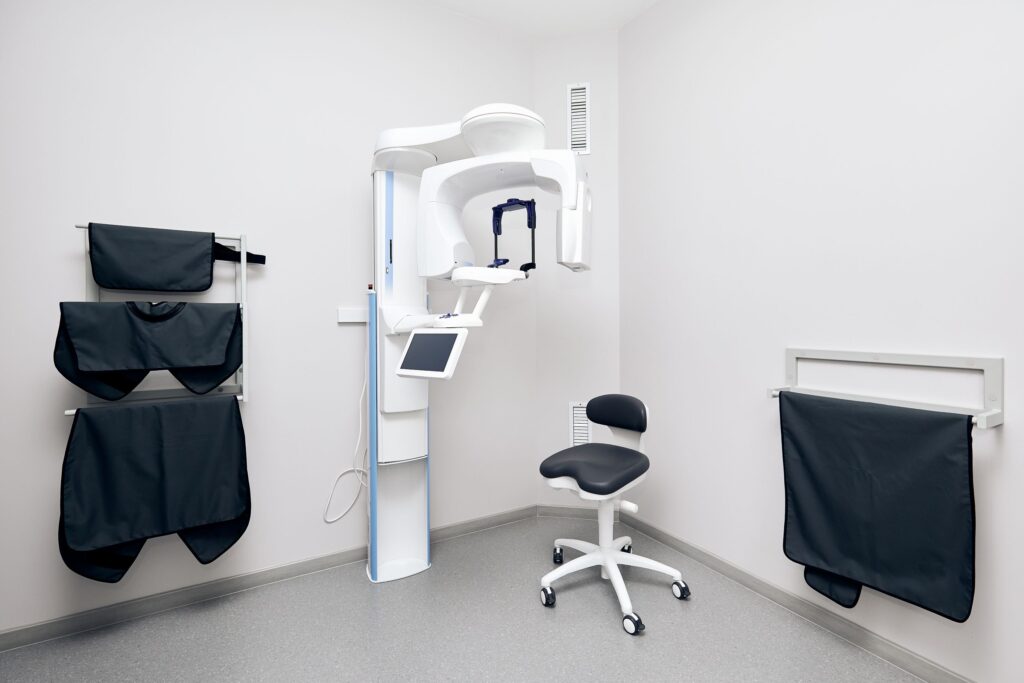
Do your teeth overlap, or have you developed headaches and neckaches you can’t explain? If so, you might have developed a tooth or bite misalignment, which can contribute to an increased risk of oral issues, like cavities and gum disease, or TMJ (temporomandibular joint) pain.
Your dentist can help, but they must first identify the underlying cause. Although they have historically used X-rays to see beneath the gums to diagnose issues, today, they can use a cone beam CT scanner for more accurate imaging. Continue reading to learn more about this advanced technology!
What Are Cone Beam CT Scans?
Cone Beam Computed Tomography (CBCT) is a specialized medical imaging system designed to create 3D portraits of patients’ mouths. Compared to standard X-rays, it captures much more detailed pictures and information about people’s dental health.
During this scan, you’ll hold your head still while the CBCT machine rotates around your head. This method is not only painless, but it also uses less radiation than standard CT scans.
When Are CBTC Scans Helpful?
This technology allows your dentist to view all your bones, tissues, and nerves in high detail to diagnose certain conditions or assist with various procedures. As a result, CBCT scans can be helpful in several different circumstances, such as:
- Planning orthodontic treatments.
- Assisting with dental implant placement.
- Diagnosing TMJ problems or gum disease below the surface.
- Locating origins of dental pain.
- Treating tumors in the jawbone.
- Evaluating bone structure, density, nasal passages, nerve pathways, and soft tissues.
What Are the Benefits of CBCT Scans?
You and your dentist enjoy certain perks when utilizing CBCT scans over other imaging techniques, including:
- Better picture quality and accuracy. This technology allows dentists to zoom in on specific areas to view even a single tooth’s root up close. That means they can better see what’s happening in your mouth for more accurate evaluations and treatment suggestions.
- Sees soft tissues. X-rays capture teeth and bones, but this detailed scan includes pictures of your soft tissues, too.
- Quick and comfortable. A full-mouth scan can often be completed in merely 20 to 40 seconds, and less than 10 seconds are required to scan a targeted area.
- Image generation. Potentially, hundreds of stills can be taken from a single scan, giving your provider more material to examine your oral health comprehensively.
If your dentist has recommended a CBCT scan and you’re unsure why, the best way to find out is to ask them directly!
Meet the Author
Dr. Russell Teasdale has more than 40 years of experience helping people improve their daily quality of life by improving their oral condition. He earned his Doctor of Dental Medicine at Washington University in St. Louis, and has since completed hundreds of hours of continuing education with prestigious institutions, like Spear Education. Today, he offers various orthodontic, cosmetic, sleep apnea, and TMJ treatments to boost your general health and well-being. He combines a caring, whole-body approach with state-of-the-art technology, including a KAVO V17 cone beam CT scanner. You can request an appointment on the website or by calling (503) 974-3829.
